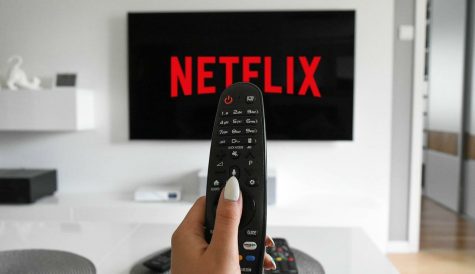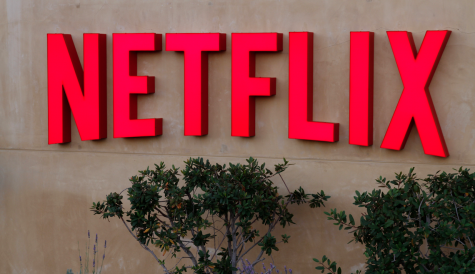
After more than 40 years of operation, DTVE is closing its doors and our website will no longer be updated daily. Thank you for all of your support.
The SVODs are coming – what Netflix must do to remain at the front of the pack

Netflix is undoubtedly at the top of the pecking order when it comes to SVODs globally – and its rivals are not even close.
In terms of satisfaction, Netflix customers are far more engaged with the content on offer than their rivals, and the record-breaking viewing figures for the latest season of Stranger Things (pictured) suggests viewers are consuming its original shows at breakneck speeds.
Digital TV Research predicts that, by 2024, Netflix will have 203 million subscribers (21% of the total) while Amazon Prime Video, Netflix’s closest rival, will have 125 million (13%).
However, the streaming landscape is rapidly evolving and as an increasing number of players enter the market – many of whom are rights holders – Netflix will have to re-evaluate its strategy in order to remain comfortably at the top of the pack.
But this isn’t as simple as it sounds.
One of the key problems facing Netflix is that much of its top content is licensed. Netflix paid Warner a reported US$100 million (€88 million) to keep Friends – a sitcom that finished 14 years ago – on its platform through 2019. This is more than triple the $30 million (€26 million) it was paying per year. But with WarnerMedia this week finally lifting the lid on HBO Max, there is no amount of money that will convince the company to part ways with its flagship iconic sitcom going forward.
Similarly, Disney is launching Disney+ later this year and is going to remove all Marvel and Star Wars films from Netflix and put them on its much cheaper competitor. Disney can afford to take a hit with Disney+. The company isn’t anticipating making a profit from the service until 2024, and will happily continue to undercut Netflix from a pricing point if it means attracting customers.
Many of these customers will subscribe to a mixture of services, but it will be much easier for viewers to drop one should it lose its lustre. And with Netflix continuing to raise its prices, it becomes an even harder sell without much of the flagship third-party content it has come to be known for.
So how does Netflix correct course to prevent a situation where it loses subscribers to these well-financed and content-rich upstarts?
The situation Netflix finds itself in can largely be boiled down to two aspects: content and cost.
For the former, Netflix has thus far relied on a very US-centric model. Create American shows for American audiences and rely on the zeitgeist to carry them around the world. This has been successful so far, with shows like Stranger Things and Chilling Adventures of Sabrina consistently featuring in Parrot Analytics global lists of in-demand original series from streamers.
Netflix has seen success with original content for the Indian market, and with several European shows and films, but these are the exception rather than the rule.
However, one region where this has had muted success is in the Nordics. According to Ampere Analysis, the average market share of Netflix in the region is just 49%, compared to an average of 71% in the rest of Western Europe. Still a successful figure by any estimation, but perhaps indicative of how the streamer suffers in a market to which it doesn’t cater its content.
“Content is now the key battleground,” argues Ampere analyst Elinor Clark, and with audience hunger for crime and thriller shows not being satisfied by Netflix, they are spending their money on localised services that will cater to them.
So from a content perspective an easy answer is for Netflix to spend more money and focus on creating content that might not have such a wide international appeal, but will be must-watch TV for people in certain regions.
The second factor to contend with, cost, is much more nuanced and with conflicting paths to go down.
Netflix has long-maintained that it has no plans to introduce advertising to the platform, but a couple of recent studies have suggested that audiences would be receptive to them with an incentive.
TDG reports that a third of subscribers would consider switching to an ad-supported tier while a separate report from Hub Entertainment Research found that 23% of subscribers to the SVOD would “definitely or probably” drop their subscription should the streamer introduce ads at the same price they’re currently paying. The Hub report goes on to say that users would be more receptive to ads if Netflix lowered its price by US$2-3 per month.
Price is a significant factor for subscribers, and with Netflix almost certainly never going to reduce the monthly cost the introduction of an ad-supported tier would seemingly solve that issue for a chunk of subscribers who are turned off from a package approaching US$20 per month.
Peter Fondulas, principal at Hub Entertainment Research, said: “The success of any Netflix ad-supported plan – whether to replace or add to its current offering – will naturally depend on whether consumers feel they’re getting a sufficient price-break return on their ad-viewing investment.
“But one thing is clear from these results: after one increase already in 2019, any attempt by Netflix to use an ad-supported plan as a reason to hike its ad-free price again could seriously backfire.”
To conclude that Netflix is in dire straits and that it needs to do this to survive has more than a hint of hyperbole.
However, Netflix has been in a comfortable position and largely untouched for the better part of a decade. Now that position is under threat, the SVOD will need to at least reconsider its stance in order to stay ahead. Warner and Disney might have huge libraries and bank accounts, but Netflix has the huge install base that the rest covet.
While the others are playing catchup, Netflix will look to protect and further enhance its position at the top.

